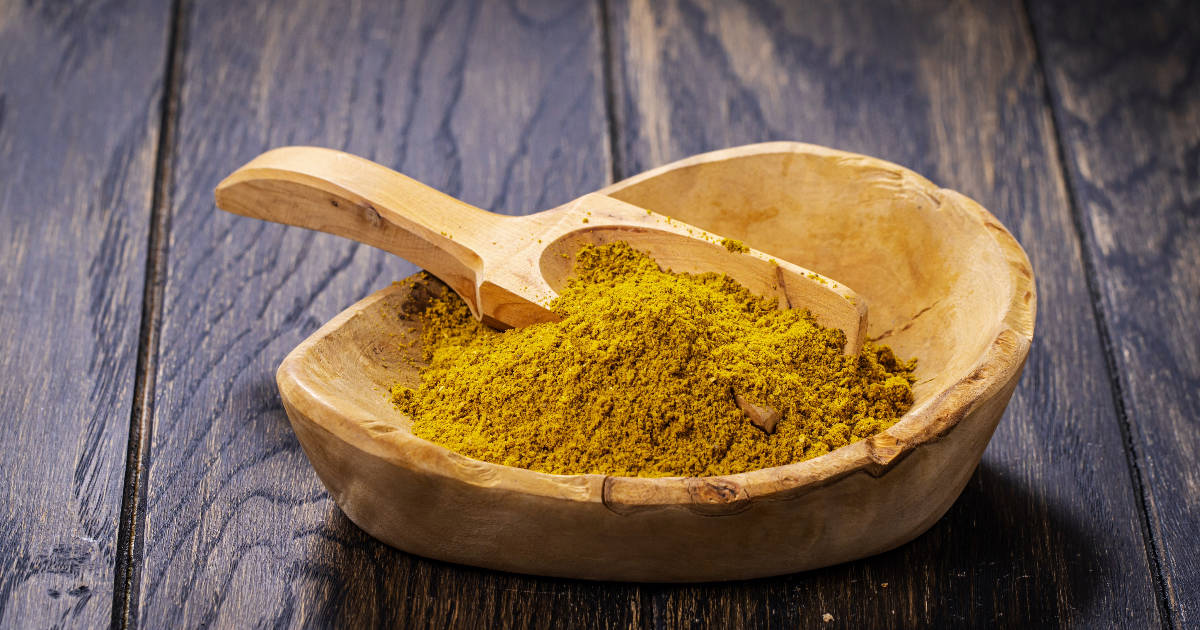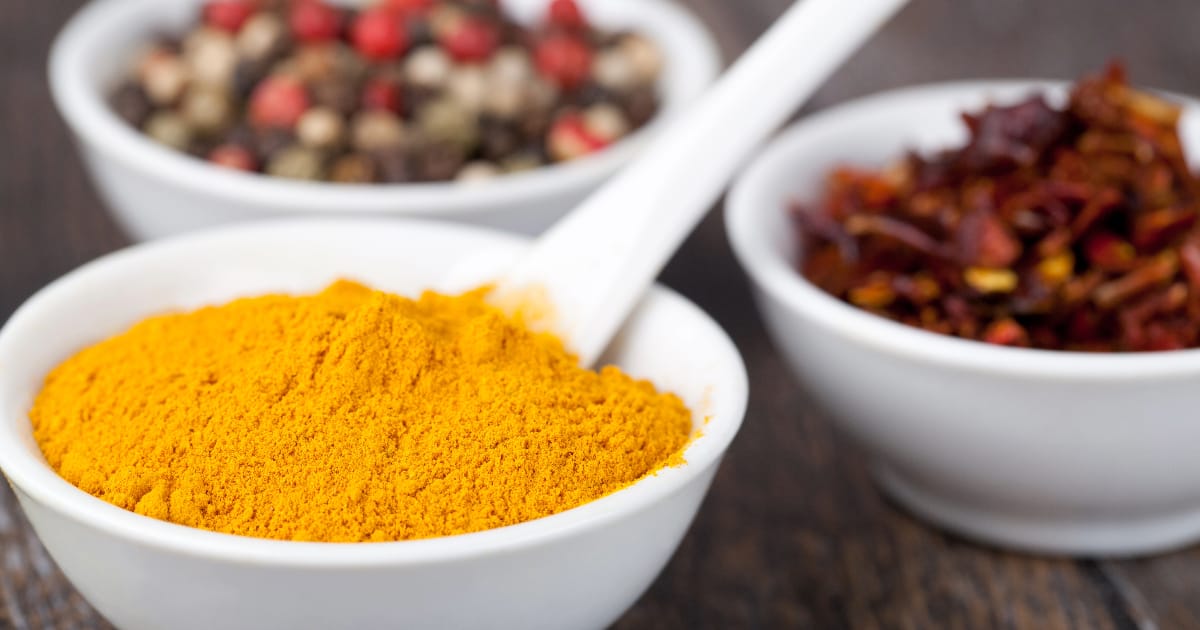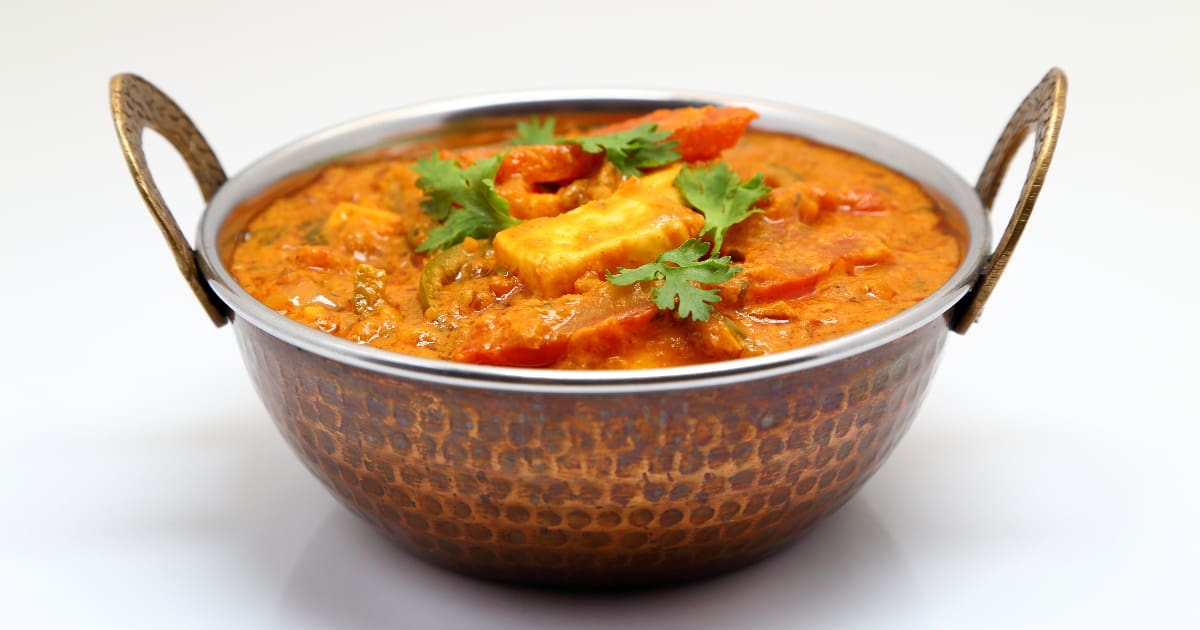Madras curry powder is a spice blend commonly used in Indian cuisine, especially dishes from the southern region. It gets its name from the city of Madras, now known as Chennai, which is the capital of the state of Tamil Nadu in India.

Madras curry powder has a deep orange-red color and a hot, aromatic flavor profile. It contains a mixture of spices like coriander, turmeric, cumin, fenugreek, chili peppers, curry leaves, mustard seeds, cinnamon, and black pepper. The addition of chili peppers gives Madras curry powder its signature heat and intense orange-red color.
Some key characteristics of Madras curry powder include:
- Deep orange-red color - From the chili peppers and turmeric. Much darker than regular curry powder.
- Hot and spicy flavor - Madras curry powder contains dried red chilies which makes it quite spicy and hot. The heat can vary from mild to very spicy.
- Strong, aromatic flavor - Coriander, cumin, fenugreek, cinnamon, cloves, curry leaves, etc. lend a robust, earthy aroma.
- Slightly bitter, tart taste - Spices like fenugreek, turmeric, and mustard seeds contribute some bitterness.
- Well-balanced despite the heat - The flavors blend together beautifully. No single spice overpowers the others.
Madras curry powder is used to add flavor and heat to various curries, vegetables, rice dishes, marinades, and more. It is more versatile than just being used for Madras curry, despite the name. The spicy, robust flavor works well in many Indian dishes.
A Brief History of Madras Curry Powder
Curry powder blends were created by the British during colonial rule in India. The native dishes using complex spice mixes inspired the British to try and replicate the flavor back home.
Since each Indian household and region had its own family recipes, the British tried to create generic curry powder blends for wider use. Different varieties emerged based on the regional styles, like Madras curry from southern India.
So while Madras curry powder has Indian origins, it was popularized globally by the British. Today it is a beloved spice blend used widely in Indian cooking.
Some key points in the history of Madras curry powder:
- Originated in southern Indian cuisine, where chili peppers are commonly used.
- Madras city was a major British colonial center which led to the popularity of this local style of curry.
- The British created their own versions of the native spice blends for export back home.
- Through international trade, Madras curry powder became globally known as a spicy Indian blend.
- It continues to be used in modern Indian cooking, both in India and abroad.
Common Ingredients in Madras Curry Powder

There are some key ingredients that give Madras curry powder its characteristic color, aroma, flavor, and heat.
Here are the most essential spices used:
Chili Powder
This is the main ingredient that makes Madras curry powder hotter than regular curry powder. Cayenne, paprika, or ground Kashmiri red chilies are commonly used to provide a spicy heat.
Coriander
Coriander seeds have a lemony, floral flavor. They are used either whole or ground into powder. Coriander is essential for the robust, rounded aroma.
Turmeric
Turmeric root is ground into a bright yellow powder. It gives Madras curry its distinctive color and adds an earthy aroma.
Cumin Seeds
Cumin has a strong, warm, and slightly bitter flavor. It enhances the other spices used in the blend.
Fenugreek Seeds
Fenugreek has a bittersweet, maple-like taste. It is used for aroma and nutrition, while also cutting down the heat.
Curry Leaves
These small, fragrant leaves are used dried in the powder. They have a mildly sweet, curry-like flavor.
Mustard Seeds
Mustard seeds add a sharp, pungent taste. They are used whole or ground in the powder.
Cinnamon
A small amount of cinnamon boosts the sweetness and aroma of the blend.
Black Pepper
Peppercorns lend some bite and further enhance the aromas of the other spices.
Cloves, Cardamom, Nutmeg
Small amounts of other spices like cloves, cardamom, and nutmeg are also sometimes added.
The blend contains hot spices like chili powder, fragrant spices like coriander and cumin, bitter spices like fenugreek and turmeric, and sweet spices like cinnamon and nutmeg. This combination creates a complex flavor profile.
How to Make Homemade Madras Curry Powder
Making your own homemade Madras curry powder allows you to customize the flavor and heat to your tastes. You can use whole spices for the best fresh flavor.
Here is a simple recipe to make approximately 1/2 cup of the spice blend at home:
Ingredients:
- 3 tablespoons coriander seeds
- 2 tablespoons cumin seeds
- 1 tablespoon black mustard seeds
- 1 tablespoon fenugreek seeds
- 15 dried red chilies
- 10 curry leaves
- 1 tablespoon turmeric powder
- 1 teaspoon chili powder
- 1/2 tablespoon cinnamon stick or powder
- 1 teaspoon ground pepper
- 1/2 teaspoon ground cloves
Instructions:
- Dry roast the whole spices (except turmeric and chili powder) in a skillet over medium heat. Roast for 2-3 minutes until aromatic.
- Allow the toasted spices to cool completely. Then grind them to a fine powder in a blender.
- Add the turmeric powder, chili powder, and ground spices. Blend again to incorporate them.
- Store the homemade Madras curry powder in an airtight jar away from heat and sunlight.
- Use within a couple of months for the best flavor.
That's it! You can adjust the amounts of each spice according to your tastes and preferred level of heat. Always start with smaller amounts of hot spices.
Tip: Toasting the whole spices intensifies their essential oils and aromas. This helps make the powder more flavorful than using pre-ground spices.
Substitutes for Madras Curry Powder
If you don't have Madras curry powder, there are a few alternatives you can use in Indian dishes:
- Regular curry powder + extra chili powder - This adds heat to regular curry powder to approximate Madras.
- Garam masala + chili powder - Garam masala provides aromatic Indian flavors. Add cayenne or paprika for spiciness.
- Tandoori masala or tikka masala - These contain some similar spices to Madras curry powder.
- Homemade Madras curry powder - Making your own allows full control over the flavors.
- Thai red curry paste - Not an exact flavor match but contains chili peppers and Indian influences.
The ratios can vary based on how spicy you want the dish to ultimately be. Start with smaller amounts of the powders or pastes and adjust to taste.
For the best flavor match, look for curry powders with similar ingredients to Madras powder, like coriander, cumin, fenugreek, mustard, and chili pepper.
Dishes that Commonly Use Madras Curry Powder

Here are some popular Indian dishes that incorporate Madras curry powder for its bold, spicy flavor:
Madras Curry
This curry dish originated in Madras City, so it is named after the spice blend used to flavor it. It has a thick, spicy sauce generally made with chicken, vegetables, or paneer cheese.
Kerala Fish Curry
Fish and seafood curries are common in coastal southern Indian states like Kerala. Madras curry powder adds delightful heat and aroma.
Vegetable Korma
Korma is a mild, creamy curry classically made with nuts and yogurt. Madras powder can spice up vegetable kormas.
Keema Matar
Ground meat curries like keema matar gain wonderful flavor from the strong spices in Madras powder.
Spice Rub for Grilled Meat
Madras curry powder makes an excellent rub for grilled chicken, lamb, fish, or shrimp. The spices really shine when caramelized.
Rice Dishes
Biryani, pulao, and fried rice all get boosted with flavor from a sprinkle of aromatic Madras curry powder.
Marinades and Dips
Mix Madras curry powder into yogurt, oils, or other liquids to make Instant marinades for proteins. It also livens up chutneys and raita.
So you see, while Madras curry powder originated in a specific region, it can be used creatively in diverse Indian dishes owing to its complex flavor profile.
FAQ
Is Madras curry powder spicy?
Yes, Madras curry powder has a spicy heat from dried red chilies used in the blend. However, the level of heat can vary from mild to very spicy depending on the amount and type of chili powder used.
What's the difference between Madras curry and regular curry?
Madras curry powder is much spicier and has a deeper reddish-orange color compared to regular curry powder which is milder with a pale yellow color. Madras also has more robust aromas.
Can I substitute regular curry for Madras curry?
You can, but you may need to add more chili powder or cayenne pepper to the regular curry powder to approximate the heat level of the Madras blend. The flavor profile also differs somewhat.
What cuisine uses Madras curry powder?
Madras curry powder is very popular in southern Indian cuisine, especially in the states of Tamil Nadu, Kerala, Karnataka, and Andhra Pradesh. But it can be used in northern Indian dishes too.
How do I store Madras curry powder?
Store homemade or store-bought Madras curry powder in an airtight glass jar away from heat, moisture, and sunlight to preserve the flavors. It will keep well for 2-3 months.
Can I use garam masala instead of Madras powder?
Not directly, as garam masala is an entirely different spice blend. But you can use garam masala with added chili powder as a substitute in recipes calling for Madras powder.
So in summary, Madras curry powder has a spicy heat with a robust, complex aroma and flavor. When stored properly, it keeps its taste for months. While originating in southern Indian cooking, it can creatively enhance dishes across all of India.
Conclusion
Madras curry powder is an intensely flavored spice blend that is essential in much of Indian cuisine. While originating in the southern city of Madras, it is now used widely across India and globally.
The chili peppers used give Madras curry powder its characteristic red-orange color and spicy heat. Fragrant spices like coriander, cumin, and curry leaves provide a strong, earthy aroma. The complex blend of spices creates a harmonious flavor profile.
It can be purchased readymade, but toasting and grinding your own whole spices results in unparalleled freshness and taste. Madras curry powder livens up curries, stews, marinades, grilled meats, rice dishes, and more.
With its versatility and bold punch of flavors, Madras curry powder is a must-have for any spice lover's kitchen. Understanding its ingredients and origins allows you to use this aromatic spice blend for culinary magic in the kitchen.

